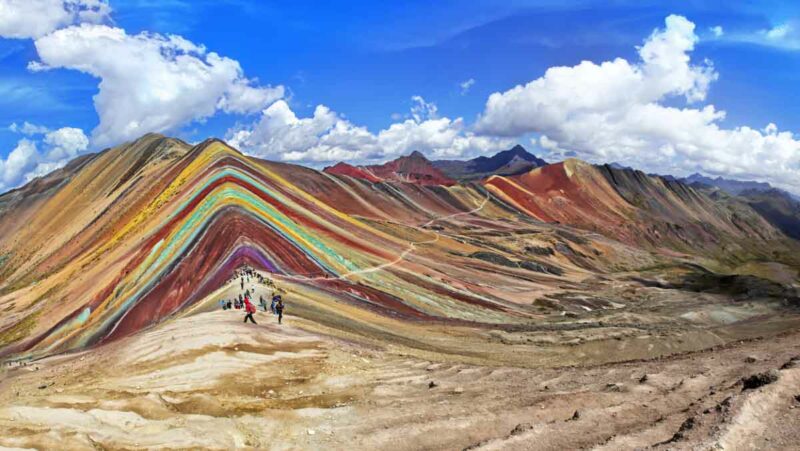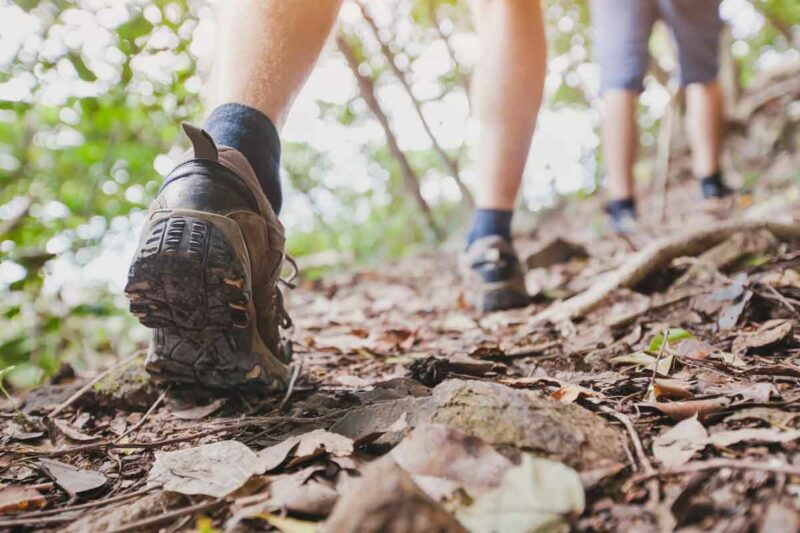Rainbow Mountain in Peru offers amazing views, high altitudes, and an unforgettable challenge. This guide, written by Lena, a seasoned South American adventurer and travel writer, shares practical information that first-timers need to know before they go.
Planning to see Rainbow Mountain for the first time? You’re in for a real experience. The views are out of this world, but don’t let the photos fool you. This isn’t a laid-back stroll through a painted landscape. It’s high, it’s cold, and it’ll test you in ways you probably didn’t expect.
It’s a challenging trek with big rewards, and knowing what to expect can make all the difference between feeling prepared and feeling overwhelmed. So, before you lace up your hiking boots and jump on that early morning bus, here’s a real-world guide designed to help you get the most out of the journey.
South America planning tools
- Airlines: LATAM
- Vehicles: Discover Cars
- Accommodations: Booking.com
- International money transfers and debit card: Wise
- Travel insurance: Visitors Coverage

The hike is short, but the altitude isn’t
The trail to Rainbow Mountain isn’t long, but it makes up for it in elevation. You’ll start the trek at over 4300 metres (14,000 feet). The mountain itself sits around 5000 metres (16,500 feet). That’s no joke. Most tours leave Cusco city before sunrise and take a few hours to reach the trailhead. By the time you get there, you’ll already be feeling the thin air.
Don’t rush. You’ll see locals passing by like it’s nothing, and that’s normal. Give your body time to adjust. Acclimating in the Cusco region for a couple of days helps. So do water, snacks, and taking breaks when you need to. There’s no prize for getting there first.
If you’re booking a rainbow mountain tour, find one that knows how to handle altitude. Some offer oxygen tanks, walking sticks, and a solid breakfast stop before the trek. You’ll want guides who understand the pace and give people room to hike at their own speed. A good one will also help you prepare with the right trekking equipment before setting out.
Expect wild weather, even in the dry season
Up here, the weather doesn’t follow any rules and can flip in a matter of minutes. You might start the day with clear skies and end it in freezing wind or snow. Even in the dry months, you’ll get cold mornings, strong sun, and surprise rain showers, all in one day.
Layers are key. You’ll need a base layer, something warm, and a windproof shell. Don’t forget your gloves, a beanie, and sunglasses, too. And yes, sunscreen. The sun at that height burns fast, even if it’s cloudy. If you forget something, there are vendors near the mountain trail, but it’s better to bring gear that fits and actually works.
Don’t underestimate footwear, either. Good hiking shoes or boots that have already been broken in will make the difference between finishing strong or limping back to the van.
Altitude will be the hardest part
What catches people off guard isn’t the distance; it’s the air. Altitude sickness doesn’t care how strong your legs are. You might feel dizzy, short of breath, or completely drained within the first half hour. That’s normal, but don’t ignore it.
Spend at least two full days in Cusco City before the hike. Drink water like it’s your job. Coca tea and coca leaves help some people. Others bring medication after checking with a doctor before the trip. Whatever you do, don’t power through it. If you feel rough, stop. Rest. Let your body catch up.
There are horses on the trail for a reason. You can rent one if things get too hard. There’s nothing wrong with being smart enough to finish the journey in a way that works for you.
The scenery is bigger than one mountain
The famous striped mountain is incredible, but it’s not the only view that’ll stop you in your tracks. From the start of the trail, you’re surrounded by glacier peaks, red valleys, herds of alpacas, and a wide, open sky. It feels untouched, raw, and real.
On clear days, you might catch a glimpse of the Ausangate mountain range, one of the highest in the Andes. It adds even more drama to an already jaw-dropping setting. Some tours offer a detour through the Red Valley. Fewer crowds, more colour. Worth it if your legs still have some gas in the tank.
When you reach the summit, take your time. Look around and soak it up. The colours may not be as bright as the edited photos online, but the scale of the place makes up for it. The whole region feels like something straight out of a dream, especially if you’ve already explored the Sacred Valley or have plans to continue to Machu Picchu.
Small things make a big difference

Before the hike even starts, the little things start to matter. Eat a solid breakfast. The early wake-up won’t help your appetite, but food gives you the energy you’ll need. Bring extra snacks, too, such as nuts, fruit, and chocolate.
The trail has toilets, but don’t expect comfort. Bring coins in case you need to pay for access. And finally, respect the place. This isn’t a theme park. It’s sacred to the locals, and it deserves more than a quick selfie.
Stick to the path, don’t litter, and don’t climb where you shouldn’t. The mountain was here long before the tours, and it should stay just as wild for the next adventure traveller.
Final thoughts on Rainbow Mountain
Rainbow Mountain isn’t for everyone, but if you’re up for the challenge, it’s the kind of trip you’ll remember forever. You’ll feel the altitude, you’ll work for those views, and you’ll leave with stories no photo could ever capture.
It’s not the easiest trek in Peru, but that’s what makes it so worth doing. And once you’re standing at the top, looking out over all that space and colour, you’ll know exactly why people keep coming back.
More from South America
Starting with our South American itinerary and our general safety tips for travelling in the region.
How will you get to Rainbow Mountain?
Photo Credits:
All photos on this page are either shot by our team and watermarked as such or stock images from Depositphotos.
About the author
Lena Hart is a freelance travel writer with a focus on off-the-beaten-path destinations in South America. She’s spent the last five years exploring the Andes and writing practical guides for curious travellers. When she’s not on the road, you’ll find her hiking local trails, collecting old postcards, or perfecting her homemade ceviche.

Alex J. Cavanaugh
That would be amazing to see in person.
I’ve lived at a high altitude (although not that high!) and I understand thin air well. It takes a while for your body to adjust. Like, months…